Материалы по археологии и истории античного и средневекового Причерноморья @maiask
Статьи журнала - Материалы по археологии и истории античного и средневекового Причерноморья
Все статьи: 371
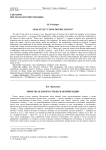
"Bad-style" coins or imitation?
Статья научная
The aim of this article is to discuss a very important topic of interest and to define the character of an immense group of coins, namely - the group of the tetradrachms, which, according to the author, are called the tetradrachms of the island of Thasos, and the “Thasos type” tetradrachms of “bad-style”. A number of authors have supported the hypothesis that the coins in question are eastern Celtic imitations. The author of this article has analyzed a number of large coin hoards, which he has already sorted and published. The methodology includes the analysis of spatial distribution; the examination of the internal chronology and dynamics of the coinage; a “die-study”. The author has divided the coinage in terms of names and types of Thasians present on the coins in three main groups: original - up until approximately the end of the 2nd Century BCE; of a “Thasos type” under the control of the Roman administration in Macedonia in the period up until ca. 80 BCE; imitative - after 70 BCE. At the same time, the author has given his own definition regarding which tetradrachms of the “Dionysios Soter” type are imitations. These are the rough and almost completely barbarous imitations, on which the legends are simply forged by marks. The images are stylized and they diverge from the prototype. The coins themselves, which have so far been called imitations, the author has divided into three groups: the first and the second ones he refers to as “bad-style” coins, whereas the third one he calls “real” imitations. The question of the so-called imitations of the tetradrachms of the Macedonian regions has been touched upon, as well.
Бесплатно
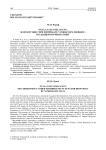
"Nulla salus bello est", или Херсонес при Митридате VI Евпаторе Дионисе: по данным нумизматики
Статья научная
В конце II в. до н.э. гражданская община Херсонеса добровольно признала зависимость своего полиса от Понтийского царства. Ее решение нашло свое отражение в денежных эмиссиях. В Херсонесе были выпущены бронзовые дихалки с бюстом Гелиоса на аверсе и с рогом изобилия и с шапками Диоскуров на реверсе. Их чеканили под контролем номофилака Гераклида. При нем отношения Понта и Херсонеса строились на основе договора о симмахии. Позже Херсонесом управлял царский наместник Деметрий. Он выпустил драхмы с изображениями Девы на лицевой и оборотной сторонах. Эти монеты поступили в обращение в период острого дефицита платежных средств в Херсонесе, вызванного борьбой Вифинии и Понта за Каппадокию в 103/102 гг. до н.э. После Деметрия денежная эмиссия в Херсонесе на время прекратилась. Уменьшился и приток иноземных монет. Экономика Херсонеса страдала от спада внешней торговли, вызванного войнами, которые вел Митридат VI Евпатор Дионис. Город возобновил денежную эмиссию только во время восстания 63 г. до н.э. Тогда поступили в обращение тетрахалки Агафона. Он при Митридате VI Евпаторе Дионисе командовал местным гарнизоном. В результате мятежа 63 г. до н.э. Агафон стал тираном Херсонеса.
Бесплатно
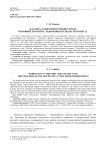
"Казарма" в портовом районе города: основные итоги исследования (взгляд из Херсонеса)
Статья научная
В статье представлены результаты археологических исследований комплекса построек, известных в историографии как «Казарма» в Портовом районе Херсонеса, проведенных совместной экспедицией Харьковского государственного университета и Национального заповедника «Херсонес Таврический» в 1993-1998 гг. В ходе работ было завершено изучение всех основных составных частей этого архитектурно-археологического комплекса: Центр «Казармы», «Галерея», помещений 35, 36 (А, Б, В, К), 38, 61, 63 и др. Была осуществлена его графическая фиксация. Также в ходе работ была прослежена стратиграфия напластований культурного слоя. Получен значительный массовый археологический материал. Результаты его изучения позволяют проследить основные этапы строительной истории и реконструировать внешний вид «Казармы».
Бесплатно
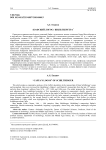
Статья научная
Проводится сравнительный анализ описаний Кафы в рукописных копиях сочинения Ханса Шильтбергера и в инкунабулах. Рассмотрены гейдельбергская, баденская и мюнхенская рукописи конца XV в., а также три аугсбургских издания 1476-1477, 1480 и 1486 гг. Выявлены разночтения, появившиеся более поздние коррективы, установлен приоритет первой инкунабулы по отношению к имеющимся рукописям, ее непосредственное восхождение к несохранившемуся автографу. Уточняются статус Кафы как столицы Черного моря, зафиксированный Шильтбергером, а также городская микроструктура - выделение городского ядра (урбс, каструм), отделенного первым ярусом крепостных стен, четырех бургов, отграниченных второй линией крепостных сооружений, и пригорода (антибург). Определяются шесть конфессиональных общин Кафы, отмеченных баварским наблюдателем. Подвергнуты критическому анализу количественные данные о Кафе, приведенные Шильтбергером.
Бесплатно
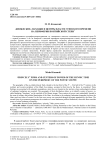
"Княжеские" находки и центры власти гуннского времени на периферии Понтийской степи
Статья научная
Рассматривается география распространения т.н. «княжеских» находок, относящихся к последней трети IV - первой половине V вв. на северной и западной периферии причерноморских степей, занятых в то время гуннами. Данные находки связаны с оседлым населением, поскольку располагаются на территории, где фиксируются археологические культуры оседлых варваров. География их распространения позволяет выявить центры власти, варварские «королевства» на окраине гуннской степи. Вне всякого сомнения, эти центры власти находились в зоне военно-политического доминирования гуннов. По отношению к зависимым от них оседлым варварам, гунны применяли две формы управления. В первом случае власть осуществлялась через посредство назначенного гуннами наместника. Вторая форма управления предполагала существование вассальных варварских политических образований, где гунны использовали власть местной оседлой аристократии.
Бесплатно
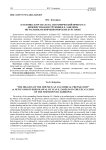
Статья научная
Деятельность выдающегося российского историка И.Е. Забелина как археолога оценивается в истории науки неоднозначно. Неизвестный ранее источник - рукописная инструкция И.Е. Забелина по раскопкам курганов Северного Причерноморья - позволяет расставить новые акценты в трактовке его полевой методики. И.Е. Забелин рекомендовал раскапывать курганы полностью, и только недостаток средств и времени заставляли его копать траншеями. Обосновывая необходимость оставлять находки in situ и отмечать их расположение, он делал верные рекомендации по обнаружению и вскрытию основного погребения, требовал использовать компас, обязательно чертить план и разрезы кургана, вести полевой дневник, фиксируя все детали, положение скелетов человека, коня, инвентаря. Инструкция представляет собой обобщение собственного опыта И.Е. Забелина по раскопкам курганов Скифии и некрополей античных городов; он сам следовал предложенным правилам, на что указывают другие архивные и печатные материалы. В дальнейшем целесообразно привлекать архивные материалы для анализа вклада И.Е. Забелина - внимательного и ответственного полевого исследователя - в методику археологических исследований.
Бесплатно
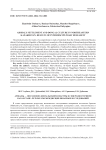
Статья научная
The article presents the results of a comprehensive study of materials from the Arshaly settlement (Maysky district, Pavlodar region, Republic of Kazakhstan): an analysis of the stratigraphy of the archaeological deposits, a typological and technological study of the ceramic complex, an analysis of the traces of use of stone tools and an archaeozoological study of faunal remains. The application of radiocarbon dating methods in conjunction with the comparative analysis of materials from synchronous sites in the region made it possible to refine the chronological position and cultural classification of the Arshaly settlement in the context of the Dongal cultural tradition. The results of the archaeozoological investigations provided valuable insights into the particularities of the livestock breeding of the ancient population. The significance of the Arshaly settlement lies in its potential for an in-depth study of the processes of cultural genesis and socio-economic changes characteristic of the transitional period between the Late Bronze Age and the Early Iron Age in northeastern Kazakhstan.
Бесплатно
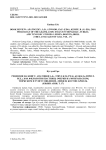
Рецензия
Professor György Kara, a distinguished member of academia, celebrated his 80th birthday recently. His students and colleagues commemorated this occasion with papers on Altaic Studies. The work, which consists of 24 articles, was edited by Ákos Bertalan Apatóczky and Christopher P. Atwood, and guest-edited by Béla Kempf. The main topics discussed in the work are Manuscripts-Texts Analyse, Sino-Mongol Glossaries, Middle Turkic, Middle Mongolian, Oirat, Tungus, Modern Mongolian, Khalka, Kipchak, Morphology.
Бесплатно
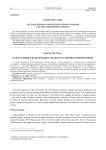
Celto-Scythians and celticization in Ukraine and the North Pontic region
Статья научная
The article provides an overview of the available linguistic, numismatic and archaeological evidence pertaining to the expansion of the La Tene culture into the area of modern Ukraine and the North Pontic region from the 3rd century BC onwards. A distinction is observed between the situation in western Ukraine where the process of Celtic migration - colonization is reflected in the archaeological evidence, and further east where the presence of Celtic “warrior bands” - mercenary groups have been identified. The testimony in ancient sources to the emergence of mixed Celto-Scythian populations in this area is also considered.
Бесплатно
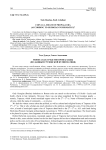
Coin as a means of propaganda (according to Georgian numismatics)
Статья научная
Everywhere coin facilitated exchange of goods. It was employed also for different propaganda. Georgians did the same as seen in the monetary groups and types as follows: municipal copper coins of Trapezus with the effigy of Mithras, Georgian-Sassanian drachms, Georgian-Byzantine coins, coins of Giorgi III - king with falcon on hand. So, at least some of monetary types issued in Georgia served for propaganda.
Бесплатно
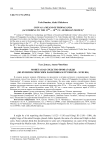
Coin as a means of propaganda (according to the 12th - 18th cc. Georgian money)
Статья научная
In the seventh issue of the journal Materials on Archeology and History of the Ancient and Medieval Crimea, Tedo Dundu and Emil Avdaliani's article "Coin as a Means of Propaganda (According to Georgian Numismatics)" is presented. In this issue follows its continuation. Throughout the world, coins contributed to the exchange of goods. They were also used as a means of propaganda. Georgia was not an exception. This is evident from the example of the following coin groups: Georgian loan money of the XII century. - the 1920s of the 13th century, coins of Georgian kings in the 13th-14th centuries, Western Georgian coins of the 13th and 15th centuries, as well as coins of Georgian kings in the 18th century. We take the results of our study for a scientific discussion.
Бесплатно

Статья научная
This paper focuses on coin hoard found in a ceramic vessel during rescue archeological excavations in Chukovezer village, Dragoman municipality, Sofia district. Coin hoard consists of 23 roman bronze coins -folles from the period of the Tetrarchy and Constantine the Great. The earliest coins (2 coins) belong to emperors Galerius Maximianus and Maximinus II Daia. The most numerous coins (13 coins) are those struck under Constantine the Great. The next small group of coins (8 folles) belong to emperor Licinius I. The event that provoked the concealment of the hoard was the First Civil War between Licinius I and Constantine I that began in 316, and the battle at Campus Mardiensis (Harmanli) in particular, taking place probably in the late 316 - early 317. The further issue discussed in the paper is comparative analysis with coin hoards found in the region of the Southwestern Bulgaria with roman coins of the same period.
Бесплатно
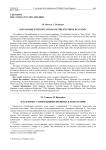
Coin hoard with imitations of Philip II from Bulgaria
Статья научная
The subject of the publication is a coin hoard containing 179 imitations known as “East Celtic”. They repeat the iconographic type of the tetradrachms of Philip II. The coin type is well known and falls into the classifications of all researchers of the so-called Celtic coinage.The authors of this material do not comment on the issue of the ethnic origin of the issuer. Also the about question of the center of this abundant coinage. The purpose of the publication is to present one of the most voluminous finds of this coin type discovered south of the Danube River. Another important aim of the material is introduce into scientific circulation some results from the study of the weight and metal content of the coins.According to previous research, the range of distribution of this imitative type is mainly north of the Danube River. They are included in all catalogs of Celtic coins, but information on their location is scarce. Often the authors present information only from which collection the coins are from...
Бесплатно
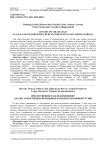
Continuity or change? An analysis of fortified church complexes in Southern Georgia
Статья научная
This article describes and discusses a series of archaeological sites. All the sites contain an ancient enclosure built using clearly pre-medieval masonries, inside of which a number of churches have been built. The dates of these fortified structures, usually improperly defined as built using “cyclopean technique”, cannot be established without archaeological excavations. Recent attempts have been made to establish functional continuity between the ancient enclosures and the churches inside them. The goal of this text is to present and discuss these interesting sites and analyse the available data relating to the function of these structures from a diachronic perspective.
Бесплатно
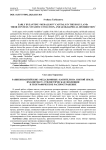
Статья научная
In this paper, twelve marble “medallion” capitals of the Holy Land are collected together, stylistically analyzed, and dated for the first time. For a better understanding of their geographical distribution, the places of recovery were marked on the map. In the recent article of C. Barsanti (2017), only 40 capitals of this type were collected throughout the whole Mediterranean region, so the number of local artifacts is rather considerable. None of the local capitals was revealed in situ but only in secondary use in the Early Islamic context or scattered at the sites. In all cases, Early-Byzantine churches dated to the 5th - 6th centuries CE were located in close vicinity. The paper consistently provides them as apparent sources from which the capitals might be hypothetically generated. Stylistic analysis showed the process of order alteration: the recognizable morphological basis of the type was followed (though not strictly) in all specimens. At the same time, ancillary details might vary considerably from one capital to the other. This process implies gradual order decline moves from more complete and detailed to more laconic variations of the “medallion” type.
Бесплатно
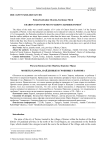
Haron coins found in Parion chamber tomb 5
Статья научная
The object of the study was a small complex of 14 coins of Charon found in tomb 5 of the Eastern necropolis of Parion. Coins that attracted our attention were released in Coela (2), Perinthos (1), and Parion (11). Consequently, the Parionites preferred to leave the coins of their own polis in the tomb. It is noteworthy that the earliest artifacts are about three centuries older than the latest ones. Moreover, the earliest of them, issued under Julius Caesar and Claudius I, are worn out much more than the others. There is every reason to believe that they have been in circulation for a long time. The rest of the coins date back to the period from Antoninus Pius to Gallienus. The conclusion is that the burials in the tomb took place over a period of about a century, or rather, from 130 until 260 CE.
Бесплатно
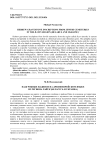
Hebrew gravestone inscriptions from Jewish cemeteries in the Raysn region (Belarus and Ukraine)
Статья научная
Hebrew gravestone inscriptions from Jewish cemeteries from the region called Raysn (mostly in current Belarus and partially in Ukraine) are studied as a historical source and a literature genre. The epitaphs express the idea of a connection between the ideal world of Scripture and religious Hebrew books and the world of everyday life of a shtetl or community. This can be traced at several levels. First, at the level of inscriptions’ structure, the epitaph includes an indication of the place (“here lies”), time (date), and name, thus tying the deceased to a specific “coordinate system”. Second, biblical quotations emphasize the relation of a particular life and death to the situation with that described in the Bible. Third, at the language level, despite the fact that epitaphs are almost always written in Hebrew and not in Yiddish, we are dealing with certain features of Hebrew-Yiddish bilingualism. Hebrew terms could simultaneously be Yiddish lexemes. We observe orthography code-switching between Hebrew consonant spelling and Yiddish phonetic spelling, depending on whether the concept is found in Hebrew holy books or in everyday life. Fourth, epitaphs occupy an intermediate position between the “high”, author's literature and canonical religion, on the one hand, and folk literature and religion, on the other hand. The difference between the epitaphs from Ukraine and Belarus is discussed.
Бесплатно
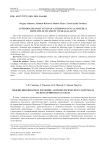
Interdisciplinary study of anthropological material from the settlement of Shagalaly II
Статья научная
Due to the widespread use of natural science methods in archaeological research, the study of intramural burials of the Bronze Age is becoming more relevant. The paper presents for the first time the results of an anthropological analysis conducted on materials obtained on the territory of the settlement of Shagalaly II (Zerendy district, Akmola region, Republic of Kazakhstan). Based on the results of archaeological and anthropological research, the burial materials given in the article are interpreted and divided into several categories. Structural and comparative analyses revealed the following types of intramural burials on the territory of the settlement: special burials, building sacrifices and the reuse of existing burial structures. Burial complexes in settlements make it possible to reconstruct the religious and ideological views of the population of the Bronze Age.
Бесплатно
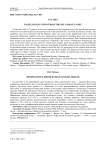
Jagiellonian coins from the Bulgarian lands
Статья научная
At the end of the 14th century, a new actor appeared on the European scene, the Jagiellonian dynasty, which for two centuries played an important role in the political life of Central and Eastern Europe. The Jagiellons also was connected with the Balkans. Here, the coins of the Jagiellonian rulers, from the progenitor Władysław Jagiełło to the last representative Zygmunt II (including those who were on the Hungarian throne), which were found in present-day Bulgaria, are examined. Both individual finds and those found in the hoards have been analyzed. Compared to the issues of Władysław Warneńczyk, the coins of the other rulers are less common, which seems logical, given the specificity and the difficulty of the period; but in the 16th century, and more specifically around the middle of the century, the number of specimens began to increase. The cultural record like this is a good proof of the contacts between the Bulgarian lands and the nations of Central Europe during this period. The article provides a basis we can stand upon in future research on the matter, since the sample of Jagiellonian coin finds in this geographical area is expected to increase.
Бесплатно
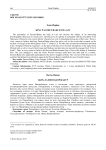
Статья научная
The personality of Pacorus/Bakur the king of Lazi has become the subject of an interesting historiographic discussion in recent years. The discovery of a pitcher in Achmarda with the inscription “Ἐγὼ Πάκουρος βασιλεὺς τοῖς μνοῖς ἒδωκα” played a key role in stimulating discussion of this issue. There is every reason to believe that king Pacorus/Bakur played an active role in the events that occurred on the territory of Georgia in the third quarter of the 3rd century CE. We take into account the information provided in the “Scriptores Historiae Augustae”, on the facts of the discovery of Greek inscriptions on the signet from Zhinvali and on silver vessels from Gagra and Maikop, and also take into account the passage from “Life of Kartli”. There is every reason to believe that Pacorus/Bakur became king of Lazi at the behest of Antoninus Pius. The Lazi managed to unite the whole Western Georgia under their rule after half of a century. Pacorus/Bakur also supposedly participated in the power struggle in Iberia. The very fact of the discovery of a pitcher that attracted our attention suggests that Pacorus/Bakur controlled the area of modern Gagra.
Бесплатно

